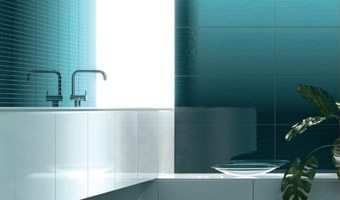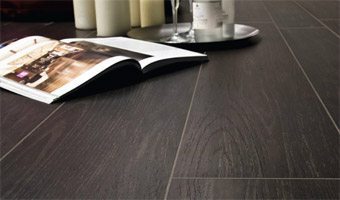Ceramic Tiles Basics
Ceramic tiles have common characteristics, but they don’t share them all. At first glance, you could think that they are basically the same, the only differences being related to texture and colour or their intended use like floor covering for some or vertical surfaces like walls or backsplashes for others.
In the generic sense, we see ceramic tiles as products that are made of natural substances like clay and silica going through manufacturing techniques including a curing process at very high temperatures. But there is more to that story.
Tiles and norms
According to the Italian organization UNI (Ente Nazionale Italiano di Unificazione) which defines the international norms for ceramic tiles, there are two parameters used for their classification: one is forming which is obtained by extrusion or pressing and the other is porosity measured by water absorption. From these two parameters, tiles are subdivided in nine groups or categories.
The need to address the global market explains the necessity for international norms. This in turn gave life to two world organizations years ago: the CEN (European Committee for Standardization) and ISO (International Organization for Standardization), a familiar name now in North America. To simplify things, let’s say that according to the norms a provider or manufacturer “guarantees” that a product meets certain characteristics and that the buyer or consumer commits to their acceptance.
Derived from extrusion and pressing, nine categories are used for the final classification of ceramic tiles according to their respective water absorption rates. There are four for tiles manufactured by extrusion and five for those that are pressed. It is said that tiles made from the extrusion process require generally a lesser control as far as dimensions and surface finish is concerned. You’ll find that this type of tile is pretty much absent on the North American market nowadays.
Traditional or creamy?
There are two families of Italian ceramic tiles: glazed and non-glazed. The term enameled is also used.
For each one, you’ll find some that are either porous or vitrified and some that can have one or the other of these characteristics.
Experts will tell you that one specific type of tile is usually intended for one specific use, but this is in no way restrictive. The variety of tiles colours, textures and finishes is more than abundant. Regardless of the type, quality ceramic tiles possess well established technical characteristics such as consistency, structural integrity, surface and chemical resistance as well as resistance to water and heat exposure as well as safety ones.
In that regard, it is important to know where the tiles will be installed and the conditions – heavy or light traffic, residential or commercial – to which they will be submitted. This means that not any tile is fit for all usages. For example, you would not want to have glazed tiles for a swimming pool patio.
You would also want tiles that offer high surface resistance for a public place like a bar or a restaurant. On the other hand, that characteristic isn’t relevant if tiles are to be used for vertical surfaces such as walls since no one steps on walls. Generally!
For a private home, you’ll look for tiles offering good resistance to chemical agents or abrasives in the case of a bathroom or a kitchen.
This being said and whatever the intended use may be, the aesthetic criteria when choosing ceramic tiles runs at the top of the list for the consumer. To that end, glazed tiles offer the largest choice of colours and designs.
You say porcelain?
In Italy, they are called “Porcelennato”, hence the name porcelain that we often hear. The term “porcelain” – almost the same – is used in French. In reality, these are stoneware tiles and they have nothing to do with dinnerware or fine china, just the opposite. Fragile they are not! “This is the type of tile that you’ll find mostly as they offer the best all-around features”, points out Mathieu Bourduas who’s in charge of purchasing at La Tuilerie.
Glazed stoneware tiles came to the market in the eighties when manufacturers found a way to apply various colourings using a specific surface glazing technique. It was developed in order to bring to the market more decorative products. As a matter of fact, the choice of surface finishes is almost unlimited. On the other hand, non-glazed tiles can also benefit from a polished and shiny aspect when submitted to a polishing process at the manufacturing stage.
In one of its technical Guide intended for industry professionals, Confindustria Ceramica (the Italian Ceramics Industry Association) indicates that “stoneware which was perceived as a technical product some 20 years ago has progressively been developed to offer a wider choice of colours with chromatic compositions reproducing those of natural stones”.
We now have stoneware tiles with surfaces which reproduce perfectly slate, terracotta and even wood! Some stoneware tiles even offer metallic-like, marble or concrete (for that industrial, urbanized look!) aspects. Just visit the La Tuilerie website under Products to get an idea of the wide variety of stoneware tiles offered and the… endless possibilities!
Stoneware tiles have conquered the market with another unique characteristic: their unequaled resistance. Although non-glazed – at the manufacturing stage – and made from a white or colored substrate, they benefit from a combination of the use of stoneware and very high pressure forming (up to 525 kg by cm²) making them extremely compact. Their hydrophilic capacity is also extremely reduced at less than 0.04%. They are non-porous (- 0%), transparent when thickness is slight and highly resistant to thermal and mechanical impacts as they are “cooked” at very high temperatures (1 400°C). This also makes these tiles a superior product when in contact with food as they are resistant to chipping (for kitchen counters) and because their smooth surface makes them easy to clean. Add to that the fact that they are impervious to temperature differences ranging from –25 to +300C°!
To sum it up, Mathieu Bourduas points out:” The durability of stoneware tiles is unequaled, which explains their popularity”. He adds that “An added bonus is the fact that both the creative side and technological advances are bringing on an ongoing basis new designs that are quite fabulous”.
As a final point as far as durability is concerned, it is said that stoneware tiles can last from 50 to 100 years!
Only one restriction applies: stoneware tiles do not let themselves to bright colors such as reds, yellows and blues for manufacturing reasons. You would have to choose faience or glazed sandstone.
Otherwise, since technology is ever evolving in all fields, a more recent process has brought an even wider choice of designs for stoneware tiles. Digital printing! It makes it possible to create and reproduce more realistic and varied designs than ever. The creative process is computer supported and the transfer of the digital images obtained to the surface of the tiles is made with the help of a special printing machine. It basically is an ink jet printer just like the one you have at the office or at home. But this obviously is where the comparison ends! One of the benefits of this technique is that very sophisticated designs can be used in a controlled manner in order to avoid repetitive patterns from one tile to the other. A good example of tiles created this way is the Slates Collection which is shown on the La Tuilerie website.
Another positive aspect of stoneware tiles comes from the large variety of tile sizes. This gives an even wider range of decorative possibilities. Large tiles being popular, you’ll find the largest ones available at 6” X 40” in the Forest Collection or large square tiles measuring 24” X 24” in the Word Up Collection and also rectangular tiles from the Luxury Collection at 18” X 36”.
As a final point worthy of mention, enameled stoneware tiles lend themselves to exterior use as they are frost and UV resistant. The only caveat is that in most cases you should look for tiles offering antiskid proprieties. La Tuilerie recommends stoneware tiles made in Europe (Italy, Portugal) for exterior applications. The “porcelain” label can be found on tiles made in other countries but they do not offer the same high level of quality.
The rest is only a matter of what suits your tastes and… creativity!




